From icebergs to smoke, forecasting where dangers will drift
Drifting may seem somewhat random, but science can make useful predictions possible
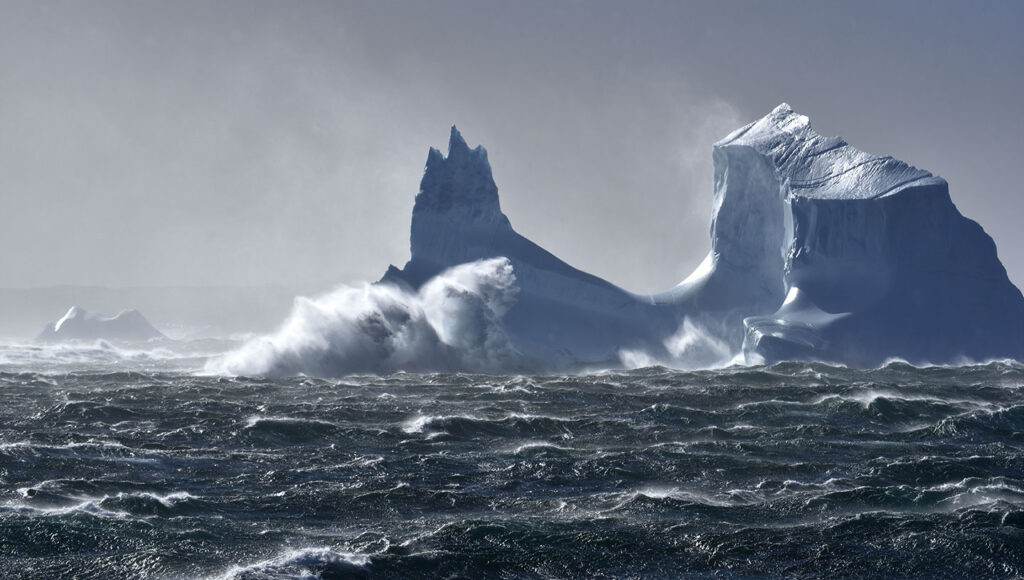
Icebergs are just one of many things that drift through our world. Scientists are studying drifting ice, smoke and invasive species to better know where these dangers may lie.
TCYuen/ Moment Open /Getty Images
In the 1970’s, people who managed ponds had a problem with algae, plants and snails in the water. To control the pests, the managers brought four species of carp, a type of fish, from Asia. But some of the fish escaped into rivers and other waterways. Soon, there were lots of fish. And they became troublesome invasive species. These non-native fish can bully ecosystems, quickly taking over. Growing fast and big, they scarf down lots of the food on which the native fish would normally depend.
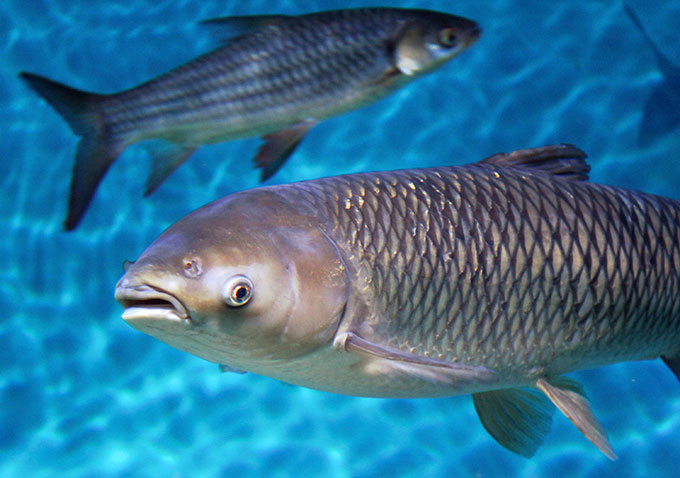
Today, the descendants of those carp remain a big problem. And as the fish spawn, their eggs have been drifting far and wide. Anticipating where something will drift can be a thorny challenge. But finding answers may head off crises.
At the University of Missouri in Columbia, civil and environmental engineer Binbin Wang is working to figure out where eggs of the invasive fish are spreading in the Missouri River. If science can get ahead of the problem, there’s hope people may figure out how to stop it. But if science is too slow to answer this question, legions of carp eggs will grow into adults that outcompete their neighbors. Stopping their spread would help reduce the overall damage they cause.
Drifting might seem unpredictable. But Wang is among a cadre of researchers looking to show how to forecast it.
Some of these drift detectives want to know if large icebergs threaten offshore oil platforms. Others hope to track plumes of polluted air or water — and determine where they’re coming from. The work is challenging. It also can be very rewarding. Most importantly, their findings may point toward solutions for some important environmental threats.
Turbulent waters
Water in a stream or river doesn’t flow smoothly. It rushes, ripples, trickles, cascades, dribbles and drips across the landscape. All that movement causes turbulence.
You may have experienced turbulence during a bumpy ride on an airplane. Or watched a coffee drinker stir creamer into their brew. The chaotic motion of that mix is also turbulence in action, Wang notes. Such stirring happens in rivers, too. In fact, he notes, it “happens in every moment of river flow, everywhere.” It’s also very important to the carp he studies. Without turbulence, he says, their eggs would sink and die.
Wang and his colleagues want to learn how water turbulence affects the drift of fish eggs. It they can predict where carp eggs are likely to be at any point in time, they can share these data with others who are working to curb the species’ spread.
Wang emphasizes that biology is not his specialty. Other researchers on his team shine at that. His expertise is understanding how fluids flow. He also studies how such flows impact environments.
And that’s where turbulence comes in. Let’s say that fish eggs are drifting through one spot in a river at noon on a certain day in May. Call that place A. By 4 p.m., the eggs will have drifted to another place, called B.
At noon, the turbulence at each site will likely differ. In fact, at any point in time, turbulence will be stronger in some spots and weaker in others. For instance, place A could be relatively calm at noon on that May day but stir much more strongly at noon on a day in June.
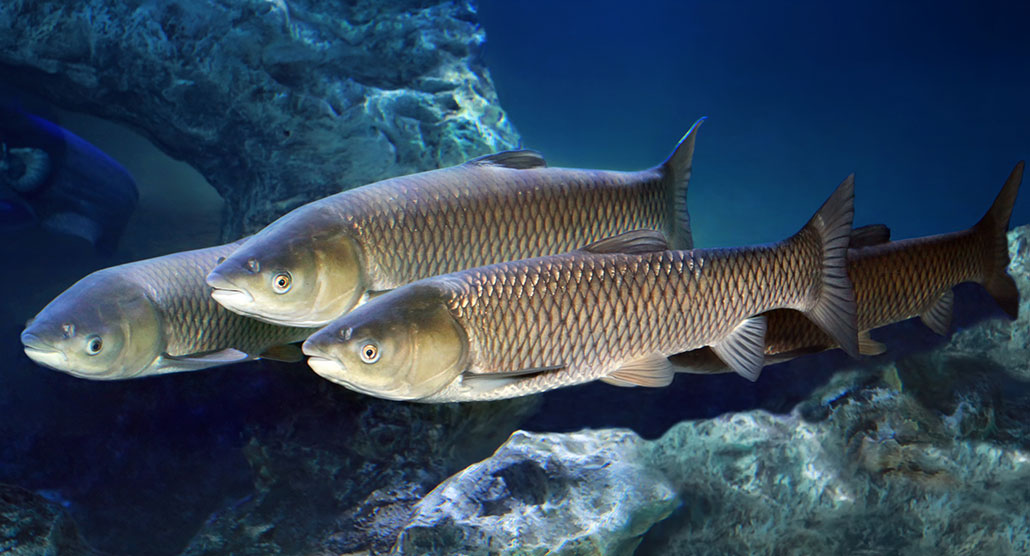
To understand how this might affect carp eggs, Wang’s team has been collecting data from many places in the Missouri River and at many points in time. They’ve been using those data to build a computer model to map what egg drift will likely be like under different conditions, especially high turbulence.
Math is a critical part of this research. Wang uses a type of advanced math known as differential equations. These deal with “variables [that] change with respect to time,” he explains. “Sometimes,” he adds, they also can “change with respect to space.” Turbulance is an important variable for Wang’s computer models, because it deeply affects how and where eggs will travel.
“Hopefully,” he says, the field data will help his team “better understand some of the data that we simulated [in the model].” Wang’s team plans to present some of its early findings this month at the American Geophysical Union’s national meeting.
A program launched earlier this this year suggests how such data might be used. Back in January, officials in Illinois and Michigan signed agreements for a project that aims to keep such invasive carp from traveling into the Great Lakes. Part of the program involves putting up a new electric barrier in a waterway near Romeoville, Ill. (Three other barriers like this are already in place.) Knowing where to put a barrier can be informed by the forecasts Wang’s team is developing.
Past icebergs were a drag
Teeny fish eggs aren’t the only noteworthy objects that drift through water. Alan Condron studies icebergs — some the size of office buildings. A climate modeler, he works at the Woods Hole Oceanographic Institution in Massachusetts.
Icebergs are huge, thick hunks of ice that break off glaciers or shelf ice and float to sea. Most of the iceberg sits underwater. The smallest ones rise about 5 meters (16 feet) above the water. The largest ever recorded was 168 meters (550 feet) tall. And some icebergs can be truly huge; one that calved earlier this year covered 4,320 square kilometers (1,668 square miles). That’s bigger than the state of Rhode Island.
Icebergs often originate in Antarctica or Greenland. Most don’t make it too far from home before they melt into the sea.
Condron and a colleague recently found, though, that some 31,000 years ago, icebergs appear to have drifted south more than 5,000 kilometers (3,000 miles). This took those ice towers from the east coast of Canada all the way down to southern Florida. The team described this on June 16 in Nature Communications.
“This idea that icebergs could get down to Florida just seems crazy,” Condron says. If you went to a Florida beach today, “never in your wildest dreams” could you imagine there might have been a time when really big icebergs would have drifted past.
The work reveals new insights about links between the past climate and the behavior of icebergs and glaciers. The bergs drifted south when large amounts of water were flowing off melting glaciers. Learning more about this past iceberg behavior could yield new insights into how icebergs might behave under future climate conditions.
Condron conducted his new research with Jenna Hill. She’s a research geologist at the U.S. Geological Survey’s Pacific Coastal and Marine Science Center. That’s in Santa Cruz, Calif. Hill looked at iceberg scours. They’re sometimes called plow marks. Long ago, icebergs etched these marks as they gouged the seafloor while drifting on ocean currents, Condron says. You might liken them, he says, to the grooves that a farm plow leaves in soil. “We’re seeing features exactly like this on the seafloor,” he says — “but much, much bigger.”
Not all icebergs leave such grooves. Where it’s deep, only massive bergs leave such traces. But in shallow water, Condron says, icebergs don’t even have to be huge to score the seafloor.
Telltale scours show up on high-resolution seafloor maps. Hill looked at about 700 of the groovy features. She focused on ones between North Carolina’s Cape Hatteras and the Florida Keys. Condron then created computer models to analyze what this iceberg migration might have looked like. Those ancient scours point to “quite a lot of icebergs” making it down to Florida, he says.
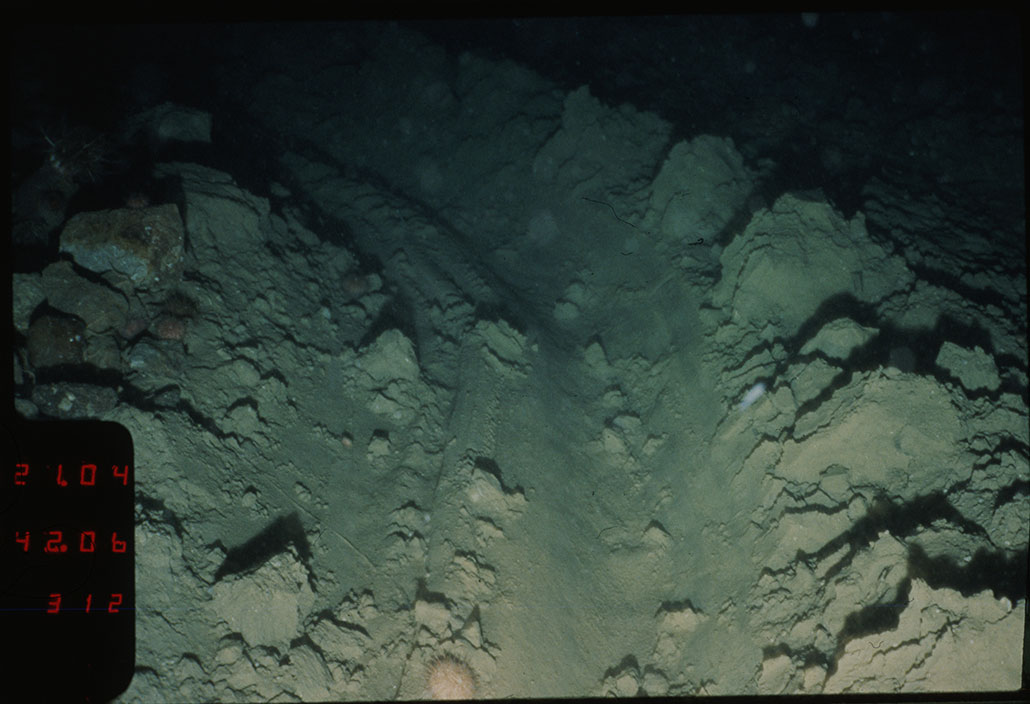
Breaking down the iceberg model
Condron’s iceberg model has two key parts. The first deals with dynamics — how far an iceberg drifted. The second is a heat equation, math that predicts the iceberg’s melt rate.
The dynamic part tells us that the force acting on an object is equal to the mass of the object multiplied by its acceleration. That acceleration describes not just with whether the iceberg is speeding or slowing, but also in which direction it’s drifting.
Other forces affect an iceberg’s acceleration, too, Condron points out. One is the water pushing on the ice. Winds also push on that ice towering above the water. Yet another driver is what’s known as the Coriolis force. It’s “caused by, essentially, the rotation of the Earth,” Condron explains. To account for these and more, he had to sum up the forces.
Finally, Condron and Hill excavated a core (or cylinder of material) from the scours and what was below them. Using radiocarbon dating, the two could identify that these grooves likely formed around a time known as Heinrich Event 3.
Now, Condron is studying the risk of iceberg collisions with things like oil rigs and ships. There are many oil rigs off Canada’s eastern coast. If global warming ups the creation of icebergs, he notes, “that would be a threat to these oil platforms.”
He also is looking at the possibility of towing icebergs. Ships have towed smallish ones off Canada to keep these from bashing into objects of concern. But the Woods Hole team is now looking at whether it might also be possible to catch and tow icebergs as a mobile block of freshwater. That idea might sound like something out of science fiction. But if it worked, Condron says, it could help bring drinkable water to areas suffering from drought.
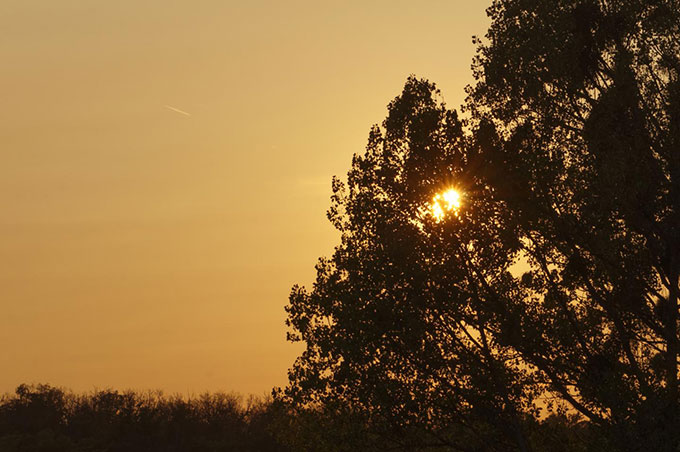
‘The sky turned milky’
Another drift detective is studying a very different problem — one increasingly being linked to Earth’s changing climate.
Holger Baars is an atmospheric scientist who has been studying plumes of wildfire smoke. He works at the Leibniz Institute for Tropospheric Research in Germany. Last year, his team watched as plumes of wildfire aerosols drifted into Germany. It wasn’t initially clear where the smoke had come from.
Baars hadn’t planned to study this smoke. But the long-range drift of those plumes became nearly impossible to ignore. The smoke “was even visible by eye, as the sky turned milky,” he recalls.
Satellite equipment had been monitoring the sky over Leipzig when the smoke rolled in. Continuous measuring instruments and lidar detected high levels of aerosols in the troposphere, he says. Those aerosols were drifting by at altitudes of between 8 and 12 kilometers (26,250 and 39,400 feet).
Instruments offered “clear indications” that the aerosols were “aged smoke,” he says. His group then used a technique called backward simulation to identify the source. It helped them show that the smoke came from the U.S. West. Most traced back to California. Large wildfires had burned through the state in September 2020. The team tapped satellite images to help track the drift of these smoke plumes through Europe.
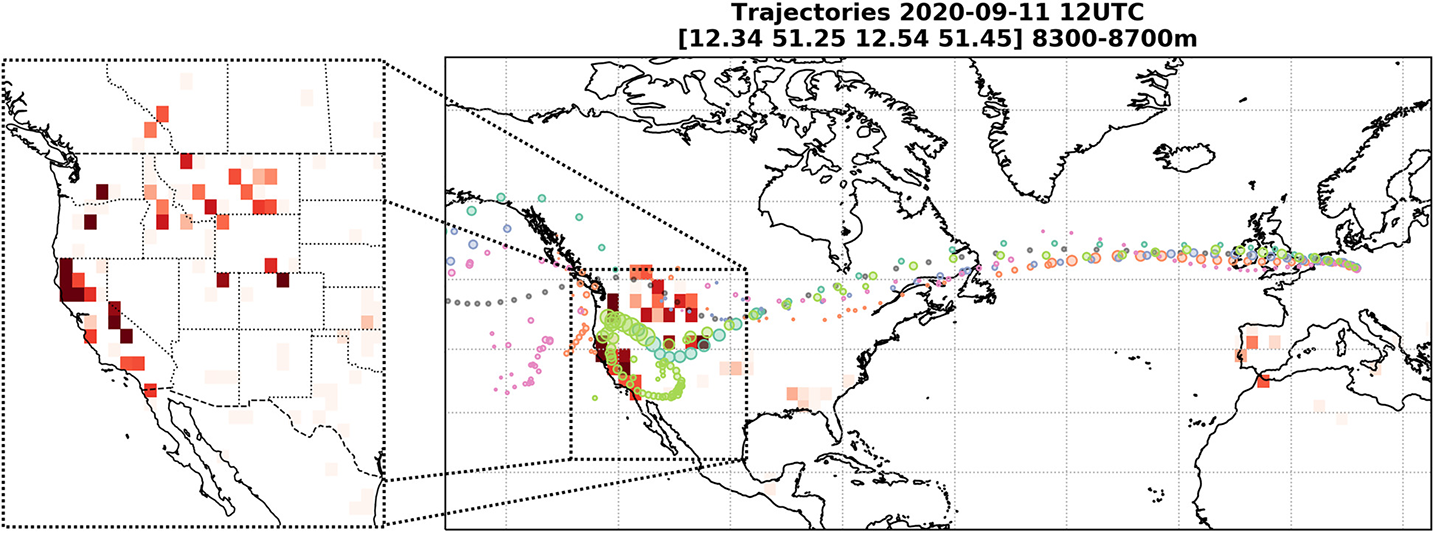
“We used a [computer] model developed by NOAA,” Baars says. (NOAA is the National Oceanic and Atmospheric Administration.) This model calculates the path of a volume of air, also known as an air parcel. “For this, one needs to know the wind’s speed and direction,” he explains. That information must cover winds everywhere between the surface and stratosphere. “You also need to know temperature and [air] pressure,” he adds. Then “the transport of an air parcel is calculated for small time steps, one after each other,” he says. That’s because at each location, wind speed and direction changes with time.
One take-home message from this research is what Baars tells his own children. “Everything is connected and [the] atmosphere has no borders.” So a fire in the U.S. West has the potential to affect the air quality in Europe and beyond. And this is only one of many issues affected by long-range drift. That’s why, Baars says, we all must take care of our environment “as this is a global effort.”
It might not seem as if drift detectives are changing the world. But they tackle problems that could have a big impact on current and future conditions affecting life across the globe.







